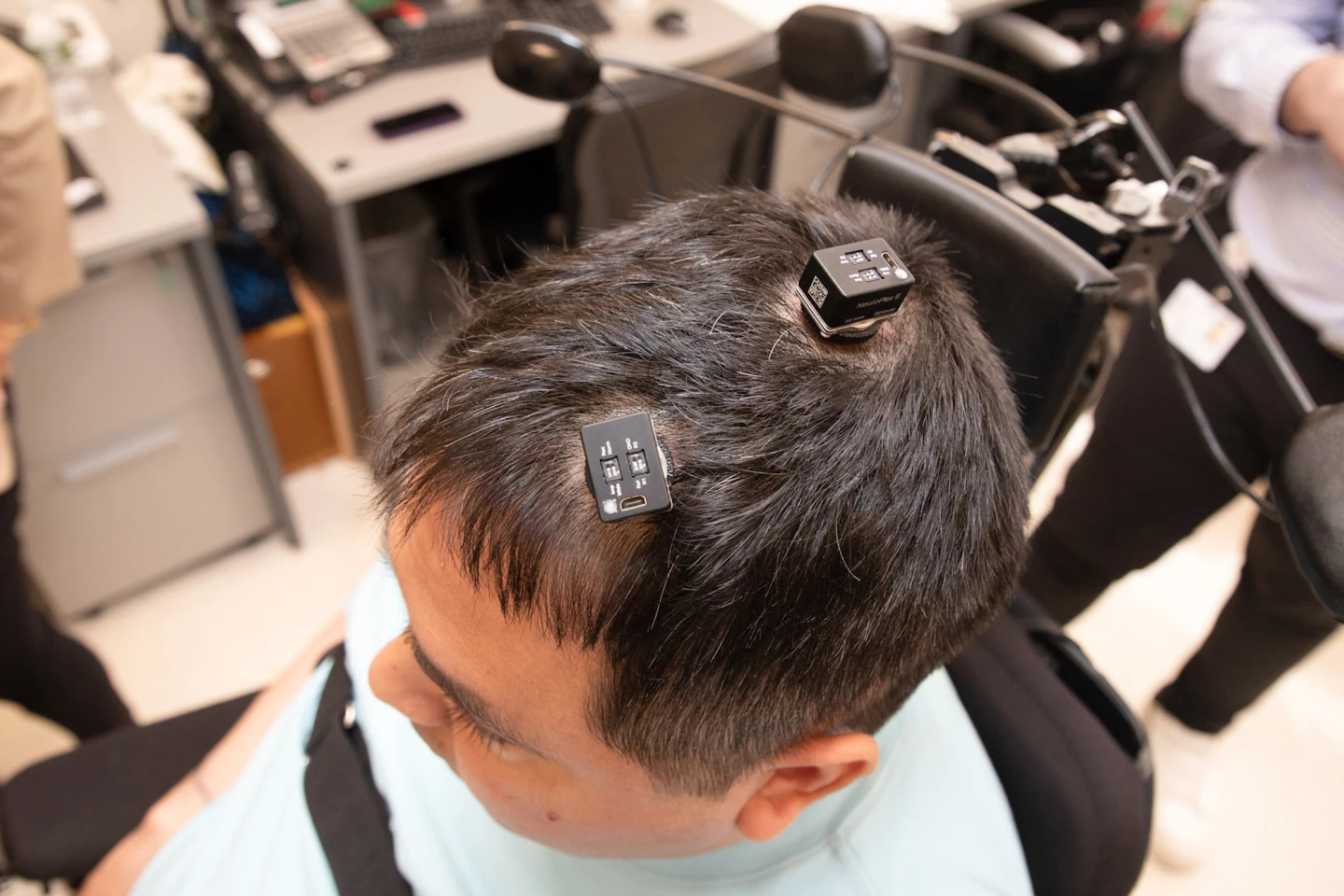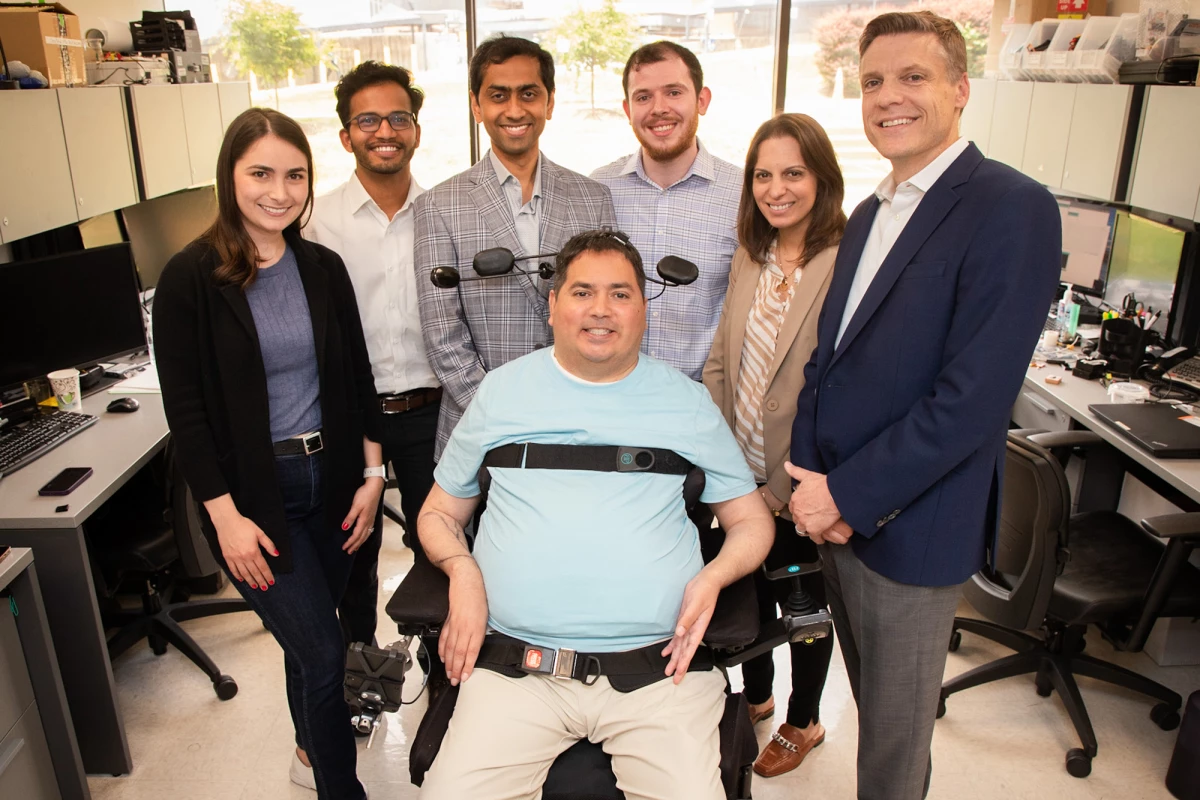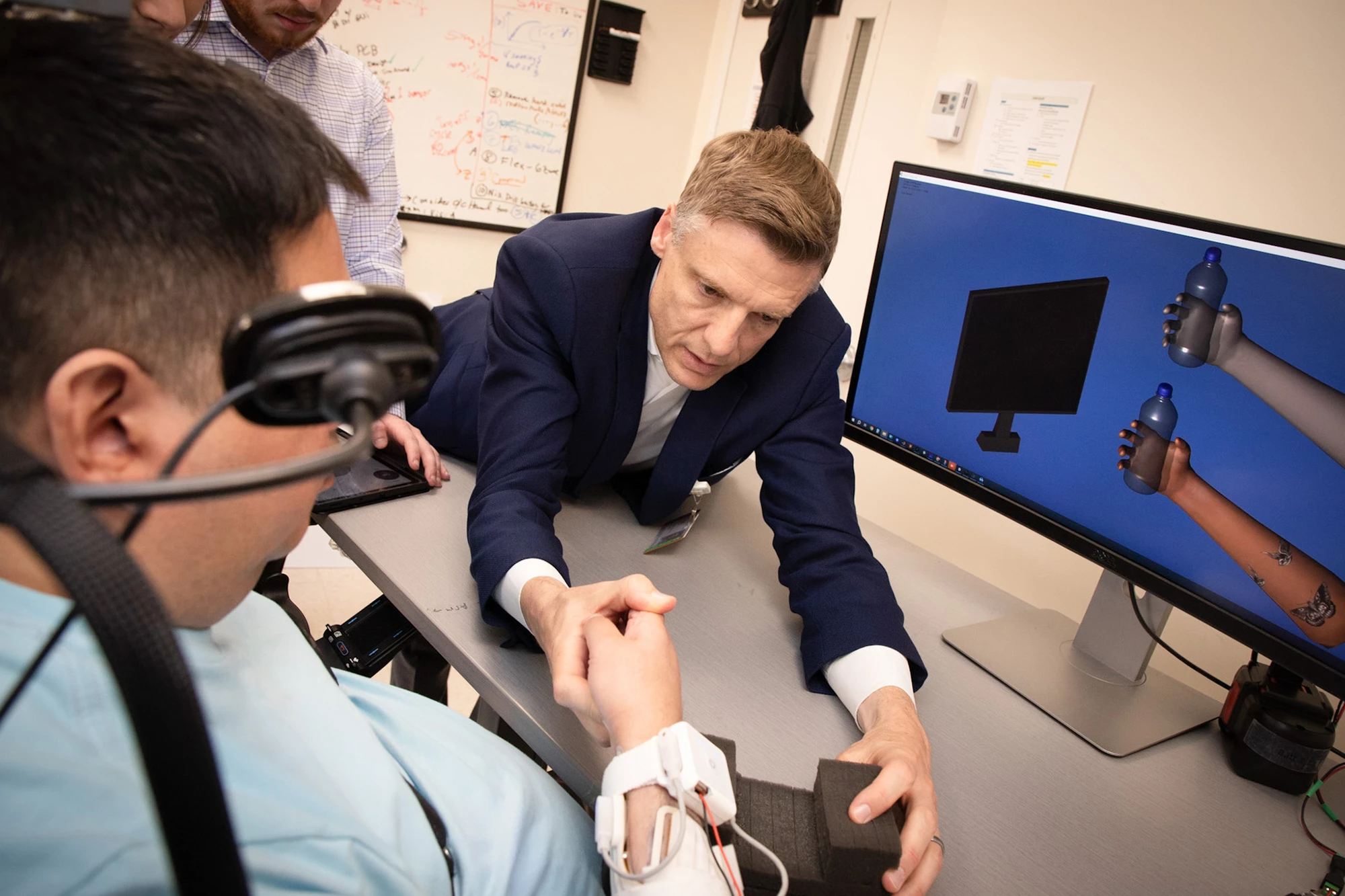Combining brain implants, AI, and electrical stimulation, a team of researchers, engineers and surgeons has developed a novel ‘double neural bypass’ technology that has restored arm movement and sensation to a quadriplegic man. It’s hoped the technology will help others affected by impaired movement or paralysis.
Keith Thomas’ life changed on the 18th of July, 2020, when he dove into a pool, injuring his C4 and C5 vertebrae and leaving him paralyzed from the chest down. But, thanks to a first-of-its-kind clinical trial, Thomas, who is from Massapequa, New York, can now move his arms at will and feel his sister holding his hand for the first time in three years.
“There was a time that I didn’t know if I was even going to live, or if I wanted to, frankly,” said Thomas. “And now, I can feel the touch of someone holding my hand. It’s overwhelming. The only thing I want to do is to help others. That’s always been the thing I’m best at. If this can help someone even more than it’s helped me somewhere down the line, it’s all worth it.”
A team of researchers, engineers and surgeons at Northwell Health’s Feinstein Institutes for Medical Research were involved in restoring Thomas’ touch and movement using a novel approach.
First, they used functional magnetic resonance imaging (fMRI) to map Thomas’ brain, pinpointing the areas responsible for arm movement and the sensation of touch in his hand. Then came a marathon 15-hour open-brain surgery to insert implants. That, at times, required Thomas to be awake so he could give real-time feedback to the surgeons.
“Because we had Keith’s [fMRI] images and he was talking to us during parts of his surgery, we knew exactly where to place the brain implants,” said Ashesh Mehta, one of the surgeons who performed the operation. “We inserted two chips in the area responsible for movement and three more in the part of the brain responsible for touch and feeling in the fingers.”

During what’s called “thought-driven therapy,” the two ports that now protrude from Thomas’ head are connected to a computer. AI reads, interprets and translates his thoughts into action, forming the basis of the novel double neural bypass approach.
When Thomas thinks about squeezing his hand, for example, electrical signals sent by his brain are decoded by the computer, which sends signals to flexible, non-invasive electrode patches placed over his spine and the forearm muscles that cause his hand to move. Sensors on his fingertips and palm send touch and pressure information back to his brain, which registers the information as sensation.
“This is the first time the brain, body and spinal cord have been linked together electronically in a paralyzed human to restore lasting movement and sensation,” said Chad Bouton, principal investigator of the clinical trial.
Since embarking on the trial, Thomas’ arm strength has doubled, and he’s started feeling sensations in his forearm and wrist, even when he’s not connected to the bypass system.

The single neural bypass approach has been used previously, with good effect. In those cases, one or more microchips were implanted in the brain, which bypassed the spinal cord injury altogether, while stimulators activated target muscles. However, the approach only worked when users remained connected to computers, often in a laboratory setting, and didn’t restore movement and feeling in the affected limb.
The hope with double neural bypass technology is that it will cause the brain, body, and spinal cord to eventually form new pathways, relearning how to communicate.
“Millions of people live with paralysis and loss of feeling, with limited options available to improve their condition,” said Kevin Tracey, president and CEO of the Feinstein Institutes. “Prof. Bouton and his team are committed to advancing new bioelectronic technologies and open new clinical paths to restore movement and sensation.”
The below video, produced by Northwell Health, documents Keith Thomas’ involvement in the double neural bypass trial, from surgery to his response to the technology.
Source: Feinstein Institutes for Medical Research at Northwell Health








